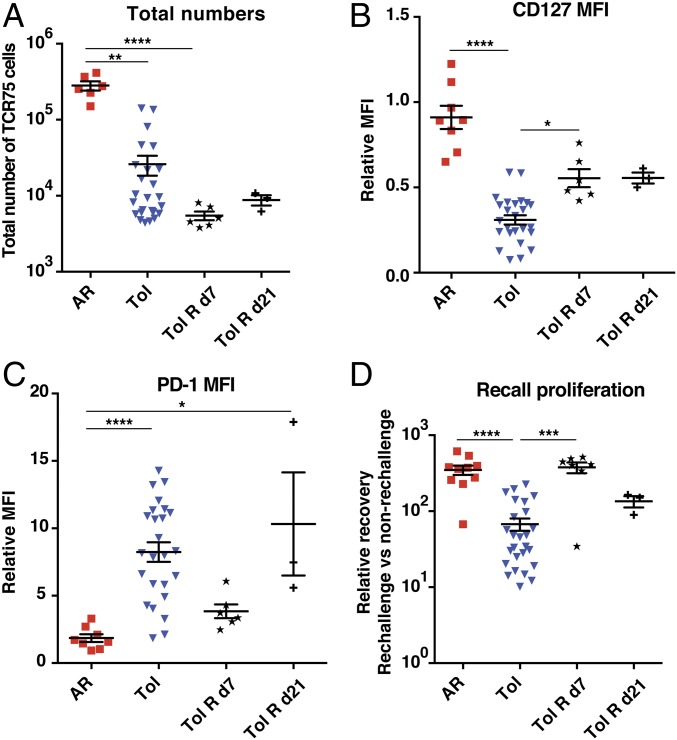Fig. 3.
Surgical graft removal early but not late posttransplantation rescues recall proliferation of graft-reactive T cells in tolerant animals. C57BL/6 mice were seeded with TCR75 cells (105) on d(−1), transplanted with BALB/c hearts on d0, and either left untreated (AR) or treated with anti-CD154 on d0, d7, d14 and DST on d0 (Tol). In a subset of the Tol mice grafts were surgically removed on d7 (Tol R d7) or d21 (Tol R d21). (A) Total numbers of TCR75 cells isolated from spleen and lymph nodes on d35 through d60. AR n = 6; Tol n = 25; Tol R d7 n = 6; Tol R d21 n = 3. A subset of the cells isolated d35 through d80 posttransfer were phenotyped for their expression of CD127 (B) and PD-1 (C) relative to that in mice injected with DST alone on d0 (MFI of DST group = 1). AR n = 8; Tol n = 25; Tol R d7 n = 6; Tol R d21 n = 3. (D) TCR75 cells sorted from primary hosts were pooled by group and adoptively transferred into new naïve mice (secondary hosts). Challenge and analysis as in Fig. 1F. AR n = 10, Tol n = 26, Tol R d7 n = 7; Tol R d21 n = 3. Data from the first 3 groups were pooled from 2 to 8 independent experiments. In all panels, AR and Tol groups are the same as those presented in Fig. 1. Mean values were compared by Kruskal–Wallis with Dunn’s correction for multiple pairwise comparisons. *P < 0.05; **P < 0.01; ***P < 0.001; ****P < 0.0001.

